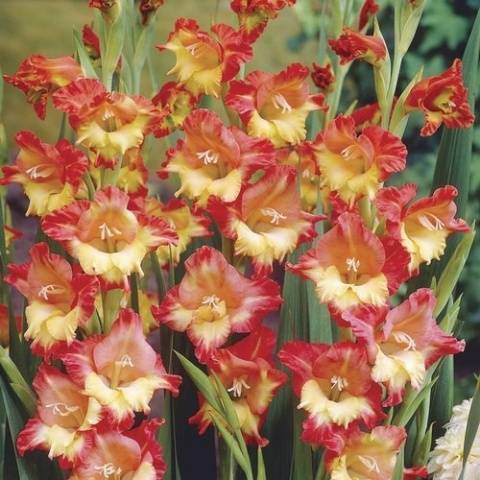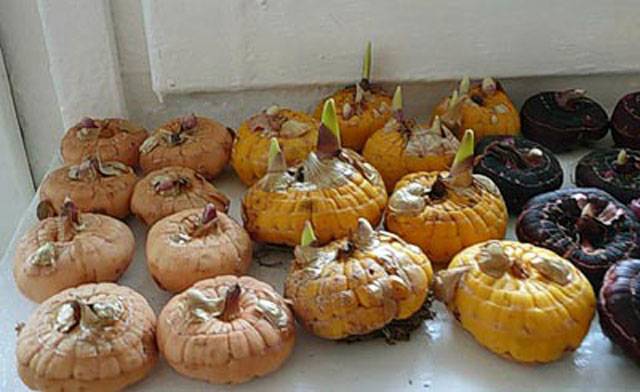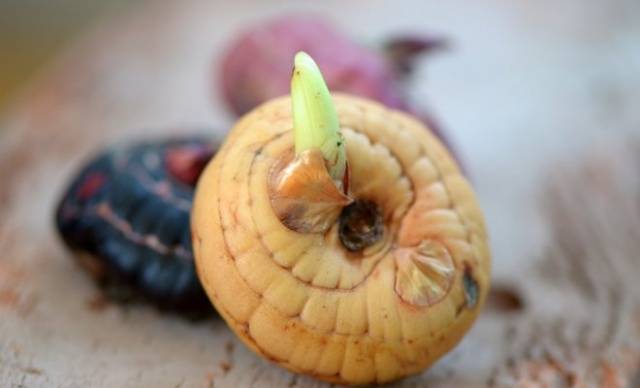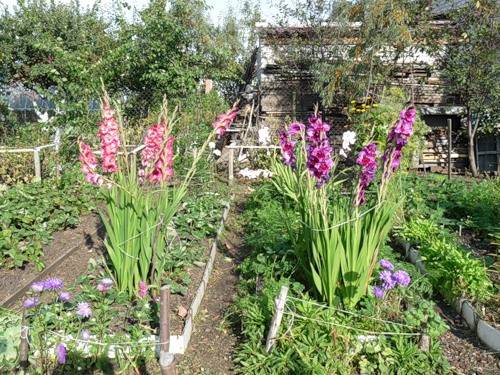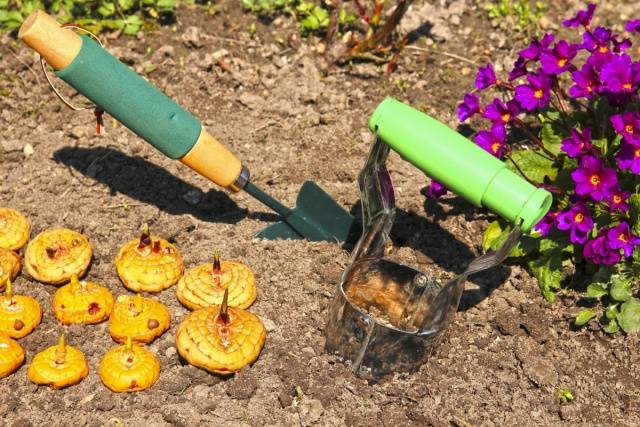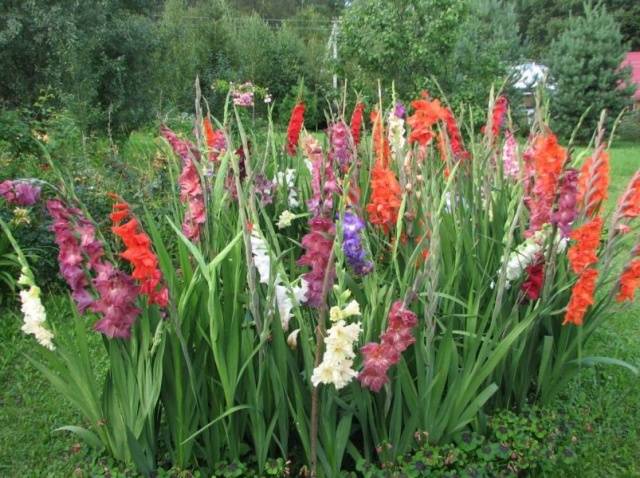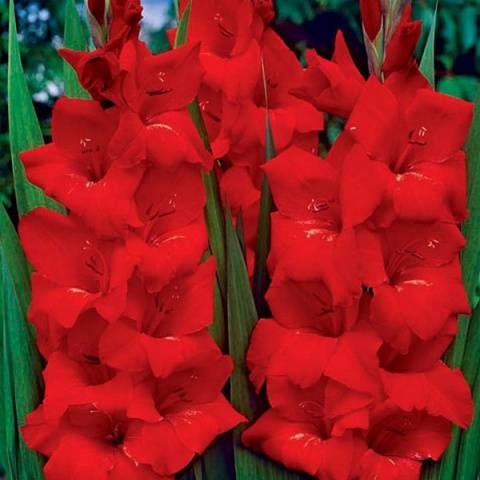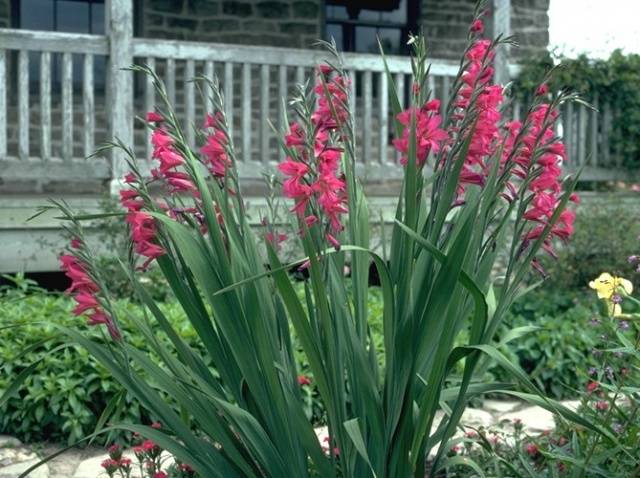Content
If the rose is considered the queen of garden flowers, then the gladiolus is, if not the king, then at least the duke. Today, a huge number of varieties of this regal plant are known, ranging from snow-white to a velvety-dark almost black shade. If gladioli are planted correctly and carefully looked after, they will become a real decoration of the garden plot. Today's article is devoted to the peculiarities of the preparation of gladioli in the Urals.
Training
The preparation of plants for planting begins in the autumn, when the corms are excavated from the soil. The corms of gladioli are stored in the cellar. Gladiolus belongs to the category of perennial plants, but in the harsh Ural conditions it is grown according to the same algorithm as annuals garden flowers... The main condition for the successful planting and further cultivation of gladioli is the properly organized storage of planting material.
About 3 weeks before planting, the corms are reviewed and sorted. To facilitate the germination process, it is necessary to cleanse the bulb from the scales. Tubers with visible signs of disease should be discarded immediately. If the diameter of the tuber is more than 8 cm, it should be cut without touching the sprouts. This manipulation contributes to the rejuvenation of the planting material, since old tubers are prone to degeneration. If you use purchased bulbs, then pay attention to the size of the bottom. The smaller the bottom, the younger the planting material.
In addition to the rejuvenation procedure, it is necessary to cleanse the maternal tuber of "children". Separate the "kids" with great care so as not to damage the tuber.
How to germinate tubers
A month before planting, the tubers are cleaned of scales and laid out in one layer in boxes. They are placed on the windowsill. A well-lit, dry place allows for good growth without roots. Mainly undamaged tubers are germinated. If the lesions are small, they are cut off, and the sections are treated with a weak solution of potassium permanganate or brilliant green. Vernalized plants begin to bloom two weeks earlier.
To reduce the risk of disease, you need to treat the corms with chemical compounds.
- Fufanon or decis solutions - from diseases such as thrips or whitefly. The etching time is 30 minutes.
- Soaking in 0.7% potassium permanganate solution or in foundazole - from bacterial and fungal infections. Duration of soaking is 20 minutes - half an hour.
How to choose a landing site
Planting and caring for gladioli in the Urals requires skill and patience. Gladiolus is handsome, but rather moody. In order for the luxurious stems to delight you with their beauty, you will have to work hard. Gladiolus is a complex crop that requires careful maintenance. First of all, you need to choose the right place for planting tubers. Plants love fertile, well-loosened soil and good lighting. If the bulbs are planted in a shaded place, then the plant will bloom 1.5-2 weeks later, and sometimes it does not bloom at all.
It is necessary that the area where the plants are planted is well ventilated, otherwise they can get sick. And the planting material with the wrong choice of the landing site will turn out to be unsatisfactory. At the same time, strong gusts of wind should not be allowed. Strong wind oppresses the plant.In addition, it can cause flower stalks to break off.
The best soil options for gladioli are:
- Chernozems.
- Loams.
- Sandy loam.
If we are dealing with clay soils, then they need to be planted at a shallower depth. You cannot use the same area for gladioli for two years in a row. It will be possible to return back to the same site in at least four years. You should not plant gladiolus where asters or phlox were planted before, since these plants have approximately the same list of diseases.
During the autumn digging of a site intended for planting gladioli, you need to apply mineral fertilizers. Their number, per square meter of area, is as follows.
- Superphosphate - 50 g.
- Potassium sulfate - 20-30 g.
In addition, humus is used to fertilize the soil. Fertilizers are applied in the spring in the same amount.
The distance between plants when planting is 15-20 cm, between rows - 30 cm. The planting depth is.
- For large tubers - 8-12 cm.
- For heavy soils - 6-10 cm.
- For light soils - up to 15 cm.
Planting gladioli
It is important to correctly determine the time of planting plants in the ground. The optimum planting depth is 20 cm. The temperature should be between 8 and 10 degrees. Disembarkation time is from mid-April to early May. Even if frosts do occur, they cannot harm the planted bulb. The landing procedure is as follows:
- The tubers are planted in the sand.
- Crush them with wood ash.
- Sandy layer again.
- The resulting "sandwich" is spilled with a weak, slightly warmed potassium permanganate solution.
- Soil layer.
This creates more favorable conditions for the growth of gladioli, even in the most difficult soils. In addition, it can be very easy to extract planting material in the fall.
Care features
The care of plants planted in the soil is as follows:
- Regular watering is required. For flowering plants, increased watering is practiced. If you deprive a flowering plant of water, then the peduncles will simply fade, and not please with a riot of colors.
- Loosening the soil about 1 time in 10 days and hilling plants.
- Plant feeding. After a month, nitrogen fertilizers are applied, per 1 m2 30 g, then another superphosphate with potassium sulfate (25 and 10 g, respectively). Top dressing is stopped in mid-August.
- Weeding regularly.
- Timely removal of dried flowers so that they do not pull nutrients onto themselves.
- To weeds did not grow so intensively, soil mulching helps.
- Tying to a support or hilling to a height of 10 cm. Particular attention should be paid to peduncles that have deviated from the vertical after rain. Moisture-saturated stem, breaks easily.
- If you cut flowers for a bouquet, you need to leave at least four leaves for the tubers to develop normally.
- Timely culling of plants with visible signs of disease.
In general, there is enough concern. As befits a self-respecting crowned person, gladiolus is capricious, whimsical and simply loves to be neglected, cared for and cherished. The question involuntarily arises: do you need it? To take care of plants almost all year round only to cut them mercilessly, at least on September 1? The answer is yes.
- Firstly, without gladioli on the site is boring.
- Secondly, planting and caring for these flowers is not easy, but incredibly interesting.
- Thirdly, if you do everything according to the rules, the result will be simply stunning.
The best varieties for growing in the Urals
The Urals are characterized by harsh winters and cool, humid summers. Unfortunately, not all varieties can withstand the conditions of the harsh continental climate. Consider the varieties that are best suited for the Urals.
Oscar
An unusually beautiful variety with rich bright red flowers. The flowers are large, triangular in shape. The height of the plant reaches 120 cm. The inflorescence is 50 cm long. The diameter of the blossoming flower is 12-14 cm.The leaves are long, thin, pointed in shape. Peduncles are resistant, but in strong winds it is recommended to tie the plants to supports.
If the summer is dry, the variety requires increased watering. Tubers are planted in prepared soil in April. Depth of planting 10-15 cm. To extend the time blooming gladioli, it is recommended to plant the plants in stages, with an interval of 14 days.
After digging, the tubers are dried in the room for several days, and then transferred to the basement, where they are stored until spring. It is important that the storage room for planting material is cool, but not freezing.
Washington
Cold-resistant plant with unusually beautiful, pinkish flowers. The growing and care conditions for these gladioli are the same as for the Oscar variety.
Black Magic
A magnificent plant with ruby-red flowers, like a good wine. The diameter of the blossoming flower is 15 cm.The height of the plant is 100 cm.
Tiled
A perennial undersized plant, the height of which is 40-70 cm. The flowers of gladiolus are bluish-purple. It is used not only as a garden, but also as a medicinal plant. The infusion is used for allergic reactions, kidney stones, and also as a wound healing and vitamin agent.
Byzantine
A low-growing plant with a stem height of 45-60 cm. The width of the flowers is 5-6 cm. The flowers are purple or crimson, with a white stripe in the center. Gladiolus "Byzantine" belongs to the winter-hardy varieties. Plants are quite unpretentious, grow on a variety of cultivated soils, but most of all they like sandy loam with organic fertilizers. When planting in clay soil, sand must be added to the hole.
Cardinal
The height of the plant is about 90 cm. The length of the inflorescence is 54 cm, with 14 large flowers of a light cherry shade with a yellow stripe. The flowering time of these gladioli is September.
Conclusion
As you can see, even in a difficult Ural climate, you can grow these regal flowers on the site. You just need to try.
